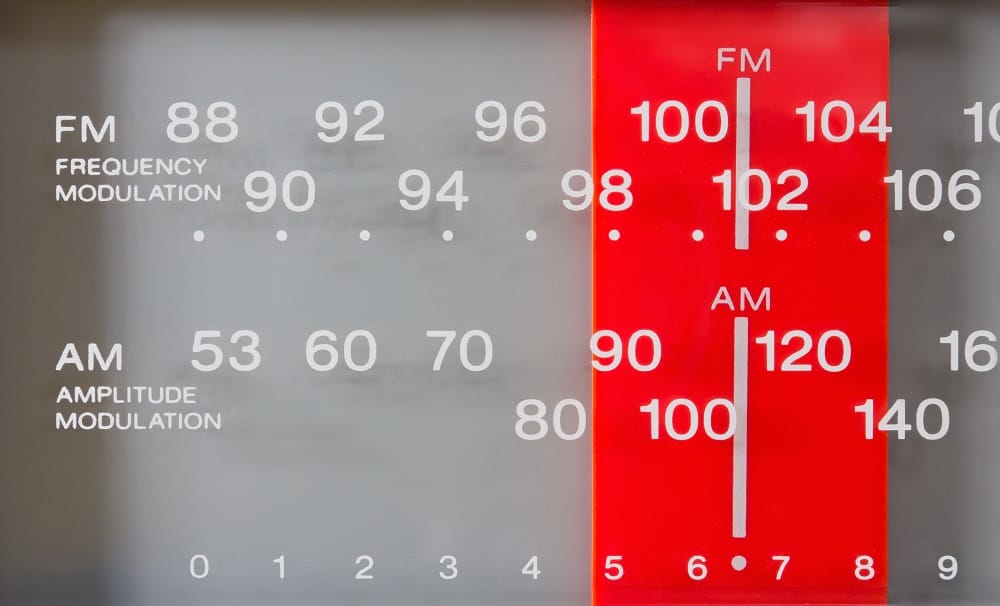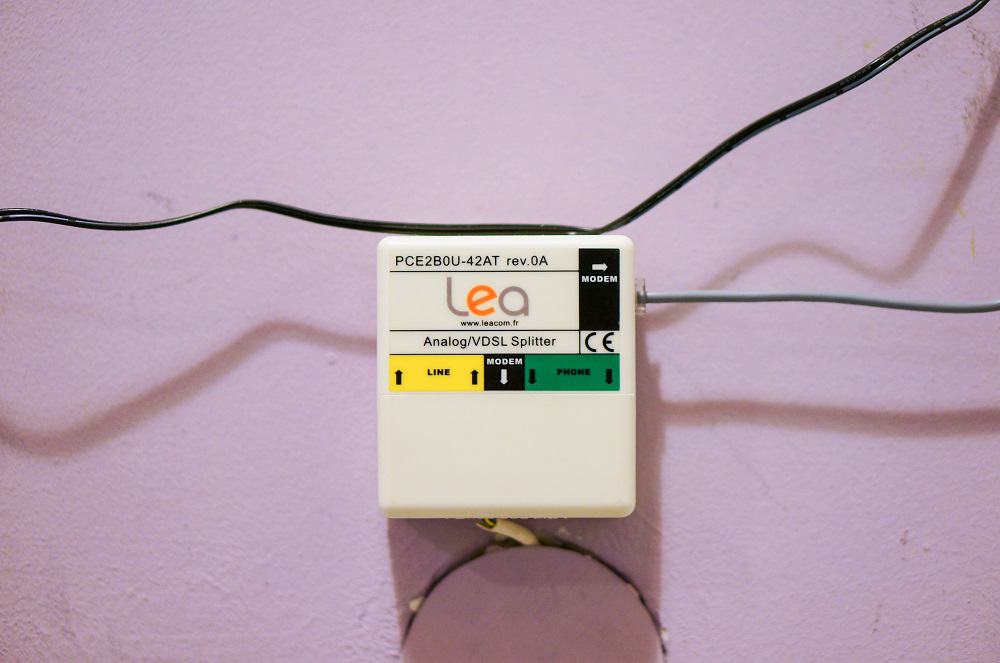The terms broadband and bandwidth are used in a number of contexts, primarily in signal processing and networking.
When applied to signal processing, bandwidth refers to the difference between the upper and lower frequencies of a signal. It is used to refer to the frequency range or limits imposed by communications channels, filters, or a signal spectrum.
Since it is a measure of a range of frequencies, its unit is the Hertz (Hz), with the more common references being in kilohertz (kHz) and megahertz (MHz).
Bandwidth and Signal Processing
To better understand how bandwidth applies to signal processing, let’s consider the case of the FM radio band.
The FM broadcast range is from 88.0 MHz to 108.0 MHz. If we refer to the FM broadcast range as a whole, then the difference between the upper and lower frequencies (i.e. 20 MHz), can be considered as the bandwidth of the entire FM range.

In the U.S., the FCC has assigned 100 channels in the FM band, each 200 kHz wide. 200kHz is therefore the bandwidth allocated to each FM radio channel.
Similarly, the AM radio band covers the frequency range from 540 kHz up to 1700 kHz, a bandwidth of 1160 kHz. The bandwidth of AM broadcast channels is set at 10 kHz.
Bandwidth and Data Throughput
In computing and computer networks, bandwidth takes on a slightly different meaning, and refers to throughput, a measure of how much data can be transferred. The unit of measure is therefore expressed as a bit or byte value per second.
In telecommunications, it is more common to use a bit rate, whereas in computing, especially when expressing the throughput of something like a mass storage device, byte rate is used. When referring to Internet and network connections in general, rates are expressed in kilobits per second (kbps), megabits per second (Mbps), and gigabits per second (Gbps).
For example, the old dial up service, had a maximum throughput of 56 kbps, whereas on a Local Area Network (LAN) using Ethernet cables, a typical throughput is 100 Mbps.
Subscriber Internet connections today vary greatly, but can range from as low as 56 kbps (although rare, used with older dial-up services), up to 300 Mbps (VDSL2-Vplus). In this context, we can now make reference to broadband.
In terms of Internet connectivity, broadband has not come to mean some specific range of bit-rates, similar to how the FM radio band sits inside a strictly defined frequency range, but instead refers to a level of service that allows the current plethora of online applications to operate at an acceptable level over the subscriber’s Internet connection.
In fact, there is no upper limit in this case. The higher the throughput, the better.
According to the FCC, any Internet connection that offers a bit-rate greater than the 56 kbps dial up service, is considered as a broadband Internet connection.
It should be remembered that 56 kbps was the highest rate available with the old dial up modems. The next generation of commercially available connection services after dial-up, started at 256 kbps, and provided an always on connection.
Always on connectivity is another characteristic of broadband Internet connections. Hence, we can consider the 256 kbps always on connection, as the first broadband Internet service. But is 256 kbps really broadband?
As Internet subscribers, we come to expect that a broadband connection will provide a certain level of service, one where streaming media, such as on demand video, occurs without interruptions or buffering.
Under such constraints, many users today, would consider 256 kbps as an unacceptable transmission rate, and may not even classify it as broadband. Yet, it does fit the FCCs definition based on bit-rate, and it does provide always on connectivity.
Where everyday users are concerned, the term broadband, takes on more of a conceptual meaning with a continually upward moving target based on expectations, rather than as a definitive measurement based on some physical criteria.
In 10 years time, we will probably consider today’s broadband speed of 100Mbps as too slow and unacceptable.
How High Speed Data Transmission Works
Let’s now take a brief look under the hood to see how high capacity and fast data transmission is achieved. As we will discover, broadband and bandwidth are closely coupled.
The majority of Internet connectivity to the subscriber’s premises takes place over the telephone copper wire originally intended for analog telephone use. These lines were part of the Public Switched Telephone Network (PSTN), originally designed to carry voice signals utilizing a bandwidth of only 4 kHz.
The telephone wire would connect one telephone handset from the subscriber’s business or home, directly to the central office (CO) or telephone exchange, over a distance that could span several miles.
Today, these same lines are used to carry bit rates up to 300 Mbps using Very high-speed Digital Subscriber Line 2 (VDSL2) technology, which is the latest development in the Digital Subscriber Line (DSL) family of technologies, used to transmit digital data over copper wire telephone lines.
Of course, a copper wire was not designed to support such high bit-rates over long distances, and in fact the maximum throughput of VDSL2 is meant for runs no longer than 1000 ft, dropping off dramatically with distances greater than 3000 ft.

The reason for this is that these PSTN lines were designed to allow a bandwidth of 4 kHz. At frequencies above this, the line starts to act like a filter. The higher the frequency, and as the signal travels further away from the source, it is attenuated, until it reaches such a low level where it cannot be discerned from noise on the line.
So how do we achieve high throughput broadband speeds, over lines with such narrow bandwidth limitations? The answer has to do with how we utilize the available bandwidth, and specifically, what modulation techniques are used.
Furthermore, Internet service providers employ a connectivity technology known as Fiber to the curb (FTTC), which extends (over optical fiber cables), the high bit-rate connections of a telephone exchange, to on-street cabinets. It then hands over the connection to the copper telephone lines already in place, for the last 1000 ft or less, and to the subscriber’s premises.
The VDSL2 standard defines several profiles, all implementing Discrete Multi-Tone (DMT) modulation. As an example, profile 30a utilizes an operating bandwidth of 30 MHz and offers a maximum download rate of 230Mbps, and upload of 100 Mbps.
The 30 MHz bandwidth is split into 3479 carriers, each with a bandwidth of 8.625 kHz. Hence, 3479 channels times 8.625 kHz gives 30,006.375 kHz or 30 MHz. For data download, the band 12 - 18 MHz is used, while for upload 18 - 30 MHz (see Download Stream 3 (DS3) and Upload Stream 3 (US3) in image above).
It should be noted that when speaking of broadband connections, we tend to mainly concentrate on the download rate, almost forgetting entirely about upload rates. Most broadband connections are asymmetrical, meaning that the download and upload rates are not the same.
Download rates are usually higher, since we tend to run applications that return more data than we send. Web browsing is the perfect example. Consider how much information is received in order to render a web page, compared to the size of the HTTP header that is sent to request that page.
The above splitting of the 30 MHz bandwidth into 3479 channels, very aptly fits the Oxford Languages more concise definition of broadband: a high-capacity transmission technique using a wide range of frequencies, which enables a large number of messages to be communicated simultaneously.
From this, we can ascertain that broadband refers to the use of a broad spectrum of frequencies that collectively create high throughput transmission.
Conclusion
In conclusion, we can say that bandwidth refers to a specific frequency range that fits a particular purpose. It does not concern itself with how that bandwidth or the frequencies it occupies are used or what modulation method is employed.
Broadband on the other hand, utilizes the bandwidth from one or more channels to achieve a particular rate of transmission, more commonly referred to as throughput.
While the measure of a broadband connection is gauged by its bit-rate (the higher, the better), bandwidth makes no such demands. The acceptability of a bandwidth of a frequency range is based entirely on the requirements of the application.

